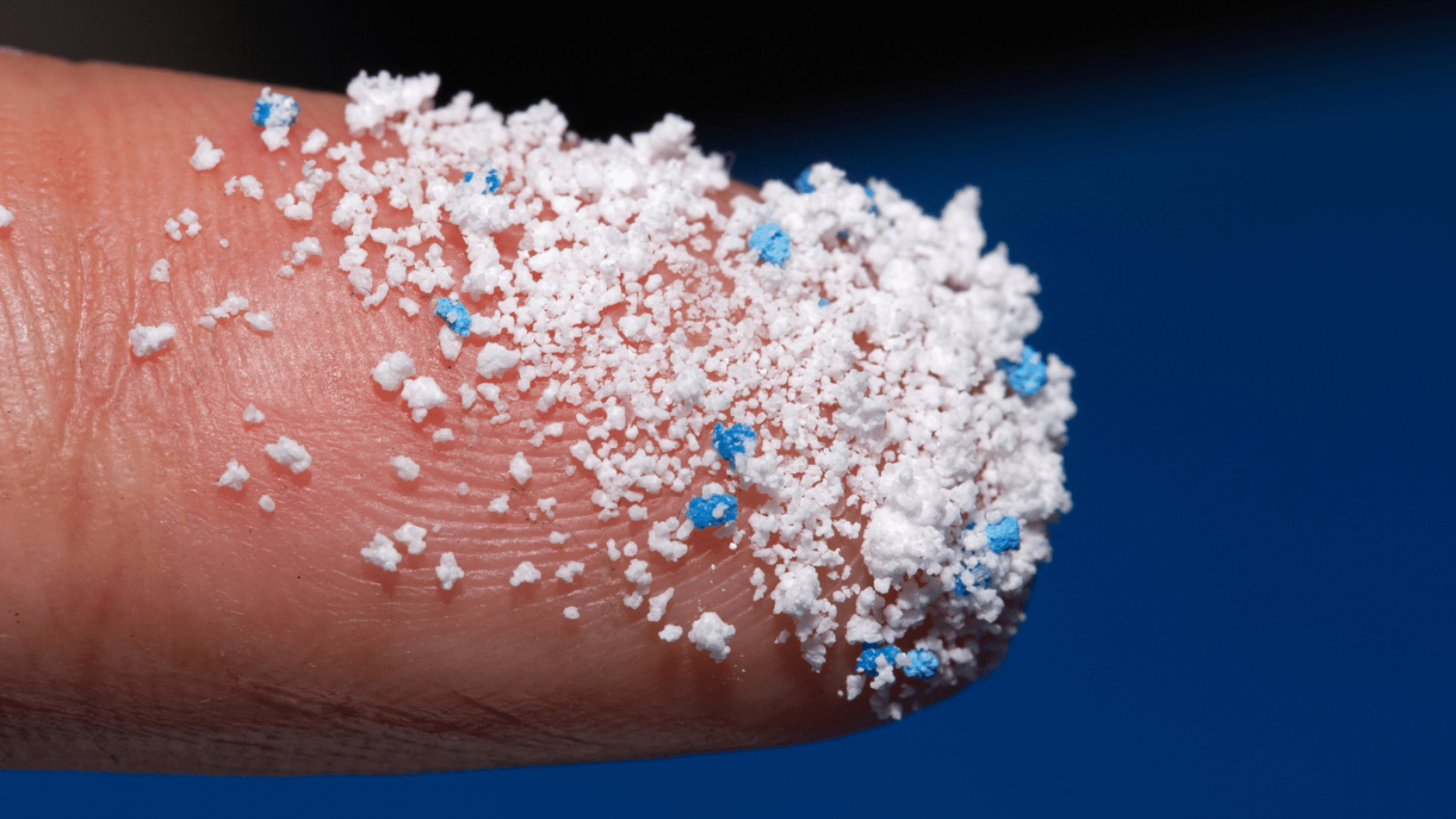By: Rameen Habib
A few months back during Ramadan, it was 2 a.m., and I was munching on some frozen chicken nuggets when I noticed something blue among the gray, mashed meat. Upon closer inspection, I discovered it was a small piece of plastic, a piece so small that I would have easily chewed it if I hadn’t been paying attention. This realization made me pause and reflect on how often these small pieces of plastic unknowingly end up on my plate. Whether in a pack of pre-cut breadcrumbs, frozen items, or a packet of salt, microplastic is everywhere. It is said that humans consume 5 grams of microplastic each week, which is about the same weight as a credit card.
To truly understand what microplastics are, also known as microbeads, they are pieces of plastic smaller than 5mm, commonly used in cosmetics and toothpaste. Most of these microplastics originate from floating plastic waste in the sea, rivers, lakes, etc., and are constantly exposed to UV radiation. This exposure causes the plastic waste to crumble into smaller and smaller pieces. These small pieces are inevitably swallowed by various marine life forms. In this way, microplastics travel up the food chain and make their way onto our plates in the form of seafood.
This cycle of consumption has raised concerns amongst scientists because of the chemicals that are used to make plastic items. For example, bisphenol A (BPA) is used for making plastic bottles transparent, but there has been evidence that suggests it interferes with our hormonal system. The chemical DEHP is known to make plastic bottles more flexible, but it is also known to cause cancer, harm the male reproductive system, and affect the development of a child if consumed by pregnant mothers.
All of these studies were conducted five to six years ago, and there wasn’t enough evidence or study to suggest any serious health risks microplastics pose to humans. But that was until my further research on this topic, I came across a recent study published by a team of Italian scientists where they, hand in hand, looked at microplastics and cardiovascular diseases. The study was conducted among 300 patients who had plaques in their arteries and were scheduled to have them surgically removed.
After their removal, the scientists looked at the contents of the plague and after analyzing them under a microscope, microplastics were found inside the plague in over half of the patients. Upon this shocking discovery, the second bizarre news came out: patients who have microplastics in their plaque or artery wall were at a fourfold higher risk of suffering a cardiovascular event, i.e., heart attack, stroke, or death by these causes.
In 2015, the Microbead-Free Waters Act was passed by Congress due to concerns about having microplastic in the water supply from the use of rinse-off cosmetics or kinds of toothpaste. But this act in itself is not foolproof because it does not ban their use at a large scale. On the other hand, we have the European Union, which last year decided to ban the use of microplastics. The new regulation restricted the manufacture and sale of organic synthetic polymers that are insoluble, resistant to degradation, and where they are intentionally released into substances that release microplastics when used. However, this ban is not applicable to industrial manufacturers, medicinal products, food additives, and animal food and feed. The EU has stated that they ‘hope’ this ban will lead to a 70% reduction in microplastics, even though some leading industries are still exempt from the ban.
Even though we do see governments taking steps to regularize and even ban the use of microplastics, it still is not enough. Pakistan has banned the use of plastic and polythene bags and we do see high-end shops using cloth bags as an alternative, but the use of plastic ones is still highly prevalent in small shops and backward places. It has been said by 5th June 2024, a complete nationwide ban will be imposed on the production of such plastic bags. Climate change shows us that any actions for the betterment of Mother Nature should not be delayed because, in the end, all these precautions, bans, and restrictions are for the betterment of humans.
There are various ways and lifestyles that one can adopt to limit exposure to microplastics. Measures to reduce exposure can be to avoid or stop using single-use plastics like plastic straws and plastic utensils. Stop microwaving food in plastic containers especially the takeout ones, as the grade of plastic they use is not that durable. Stop using plastic water bottles; rather, opt for the glass ones, as they are recyclable and more long-lasting. But unfortunately, some things are unavoidable, ultimately we will be consuming microplastics if we consume seafood. It would also be tricky to tell someone to avoid fish for their heart health because past studies provide us with enough evidence that has always suggested that most people who eat fish have a better and balanced lifestyle. Most scientists believe that if microplastics are causing heart diseases, the nutrients of the fish itself would outweigh that element.
This study, conducted by Italian scientists, is the first of its kind and the first ever evidence produced to see the detrimental effect of microplastic on human health. It’s plausible that microplastics have accumulated more recently, so the negative effects shall be seen later on, but there is no denying that they exist, and they are slowly but surely plaguing our lives like the most vicious invisible threats.
The writer is a law student and a freelance columnist. She can be reached at [email protected]















